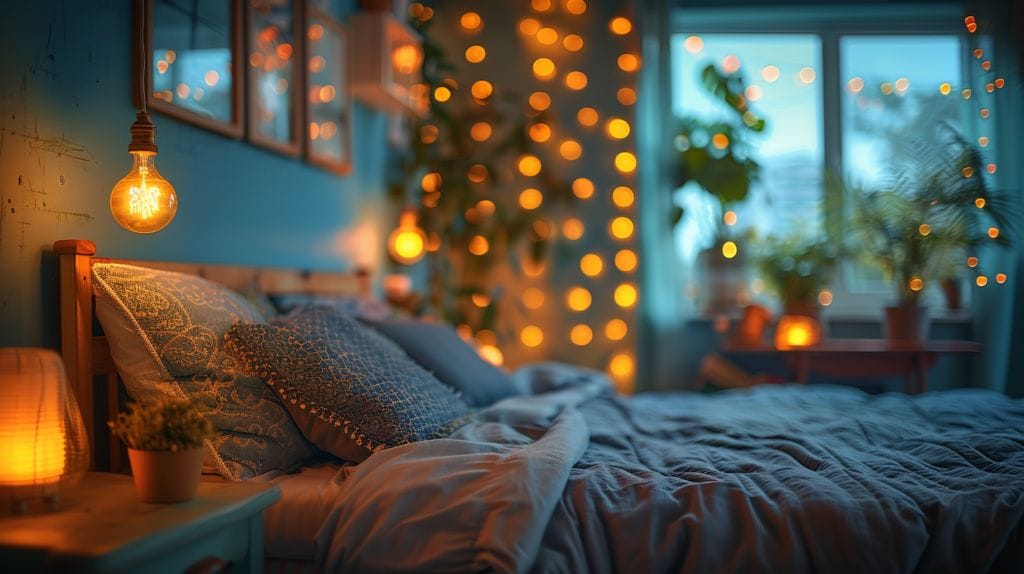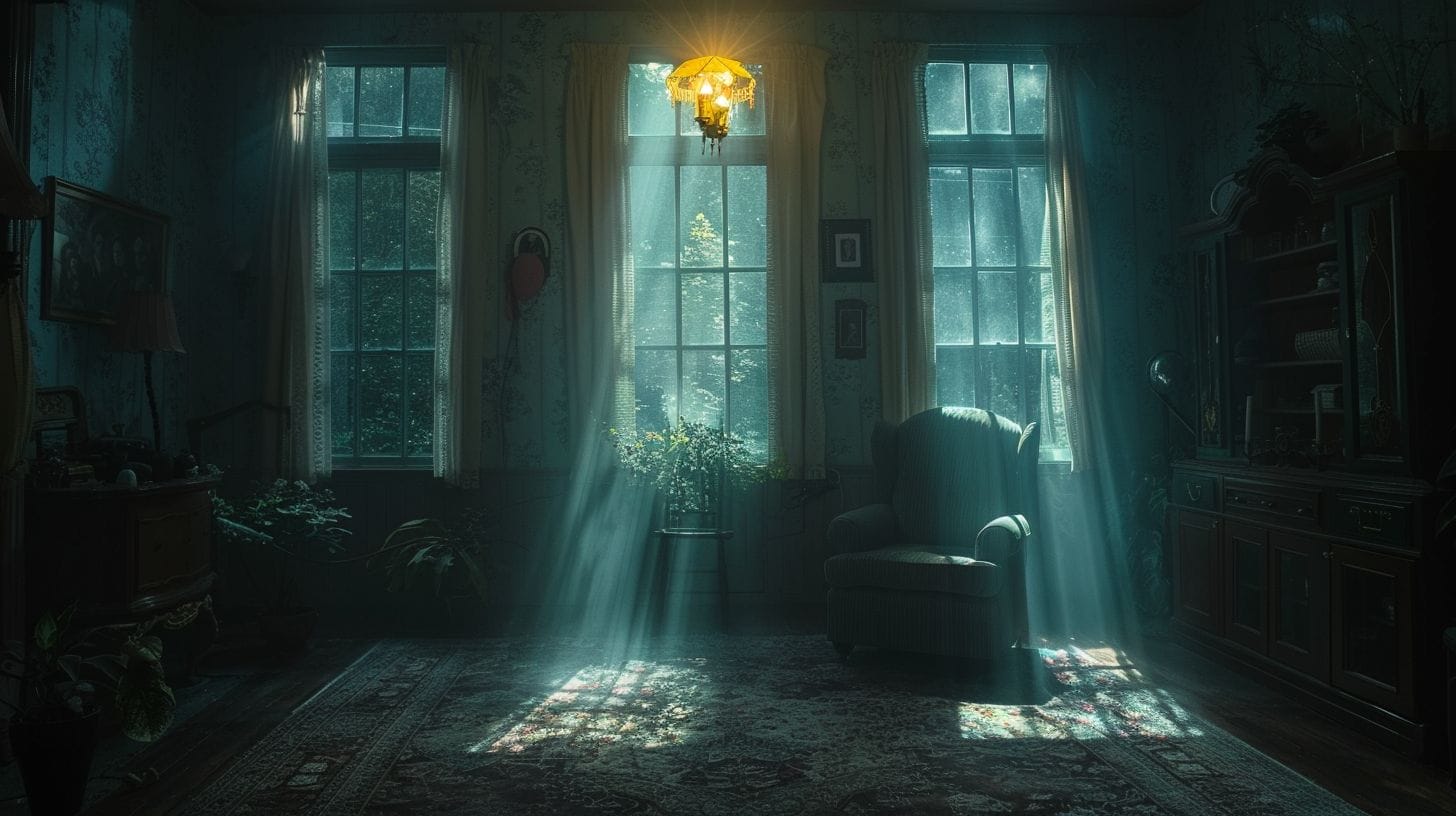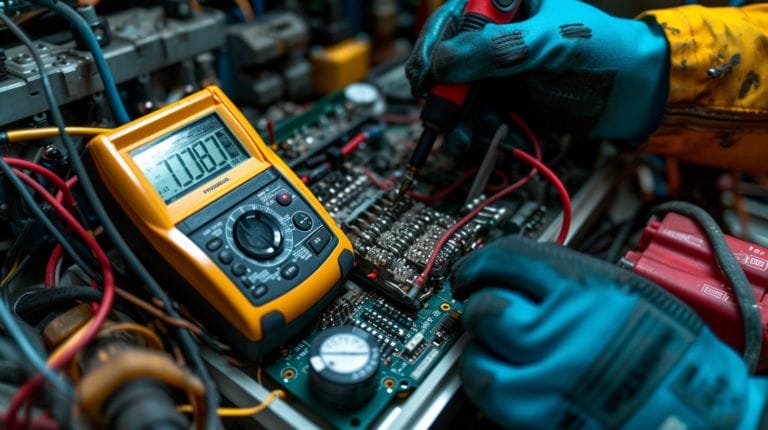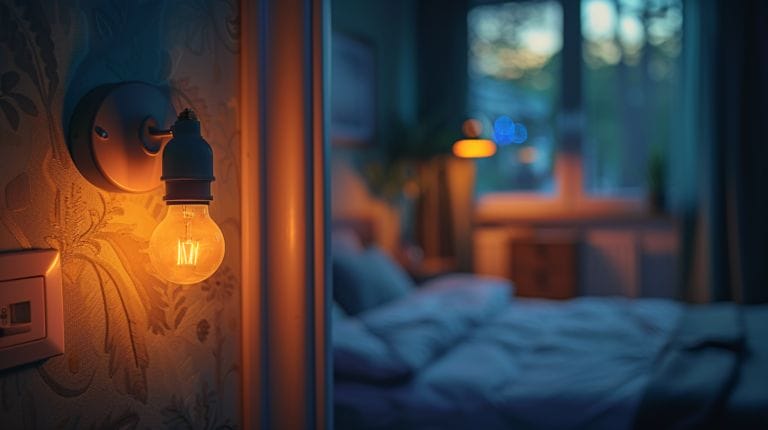Are Buzzing LED Lights Dangerous: The Truth Behind The Hum
You may not realize that the subtle hum emitted by LED lights could be more than just a minor annoyance. Rough service bulbs might be a viable solution to mitigate this issue. Have you ever stopped to question if this low buzz that often accompanies these energy-efficient bulbs could pose a danger?
So, are Buzzing LED lights dangerous? This article uncovers the truth behind buzzing LED lights and the potential risks they might present.
Key Takeaways
- Buzzing LED lights can lead to health issues like stress, headaches, and sleep disturbances.
- Incompatible dimmer switches, particularly those not on lists of compatible dimmer switches, are a common cause of buzzing in LED lights.
- Promptly addressing buzzing LED lights is crucial for a healthy living environment.
- Troubleshooting buzzing involves checking dimmers, fixtures, wiring, and seeking professional help if needed, and sometimes may require removing the diffuser to access the inner wiring.
Understanding the Buzz: The Phenomenon of Buzzing LED Lights

LED lights often emit a subtle buzzing sound that can be attributed to the electrical components within the fixture. This buzzing phenomenon isn’t unique to LED lights; incandescent lights and fluorescent bulbs can also produce similar noises. However, the buzzing in LED lights can be more pronounced due to their electronic drivers, responsible for converting the electrical current into light. When these drivers operate at high frequencies, they can create vibrations that result in the buzzing sound.
A common factor contributing to buzzing in LED lights is the use of a dimmer switch. While dimmer switches are excellent for controlling the brightness of your lights, they can sometimes cause compatibility issues with LED fixtures, leading to buzzing. Unlike incandescent lights that work well with traditional dimmer switches, LED lights require specific dimmers designed for their technology to avoid buzzing.
Compared to fluorescent bulbs, LED lights generally produce less buzzing. Fluorescent bulbs contain ballasts that can contribute to the buzzing noise when they start to fail or are of lower quality. In contrast, LED lights don’t have ballasts, reducing the chances of buzzing related to this component. Understanding these differences can help troubleshoot and resolve buzzing issues with LED lights efficiently.
Potential Hazards of Buzzing LED Lights

As we delve deeper into the potential hazards of buzzing LED lights, it’s essential to understand the implications of prolonged exposure to this buzzing phenomenon. While LED lights are known for their energy efficiency and longevity, the buzzing sound they emit can have detrimental effects on both health and well-being. The constant buzzing noise can lead to increased stress levels, headaches, and even disturbances in sleep patterns, impacting our overall quality of life.
One of the primary contributors to LED light buzzing is the use of dimmer switches. Dimmers are designed to control the brightness of lights by adjusting the voltage supplied to the fixture. However, using incompatible dimmers with LED lights can result in buzzing sounds, as the dimmer may not be compatible with the electronic components of the LED bulbs. This mismatch can cause the LED lights to flicker and emit a buzzing noise that isn’t only irritating but also potentially harmful.
The health impact of buzzing LED lights shouldn’t be underestimated. Prolonged exposure to the buzzing noise can lead to irritability, fatigue, and concentration issues, affecting productivity and overall well-being. It’s essential to address the issue promptly by using compatible dimmers and seeking professional assistance if the buzzing persists, ensuring a healthy and peaceful environment free from the hazards of buzzing LED lights.
Diagnosing the Issue: Why Your LED Light is Buzzing

When troubleshooting buzzing LED lights, it’s essential to identify the root cause of the issue, such as a mismatch with the dimmer or a need to replace the light fixture entirely, to ensure a quick and effective resolution. LED lights can emit a buzzing sound due to various factors such as incompatible dimmers or fixtures, as well as underlying electrical issues within the wiring.
Diagnosing the buzzing problem with your LED light involves a systematic approach. Start by checking if the buzzing occurs with a specific dimmer switch or fixture. Sometimes, certain dimmers aren’t designed to work with LED technology, leading to compatibility issues that result in the buzzing noise. In some cases, replacing the light fixture entirely with one that’s compatible with both LED and incandescent bulbs can solve the problem. In such cases, replacing the dimmer with an LED-compatible one can often resolve the problem.
It’s also crucial to consider the overall electrical setup when dealing with a buzzing LED light. Faulty wiring or improper installation can cause electrical disturbances that manifest as buzzing sounds in the light fixture. In these situations, consulting a professional electrician is highly recommended..
Practical Solutions: How to Fix a Buzzing LED Light

To rectify a buzzing LE light, start by ensuring compatibility with dimmers and fixtures. Using incompatible dimmers can often lead to buzzing. Check the packaging or manufacturer’s guidelines to ensure the dimmer switch is compatible with LED lights. If the issue persists, consider consulting a professional electrician to assess the wiring and connections. They can identify any underlying problems and provide solutions to fix the buzzing.
In some cases, replacing the dimmer switch with one specifically designed for LED lights can resolve the buzzing. Opt for a leading-edge dimmer that’s compatible with dimmable LED bulbs. Additionally, consider installing a low-voltage LED driver to regulate the power supply and reduce buzzing.
Another practical solution is to inspect the fixtures for loose connections or consider replacing the light fixture entirely if the issue persists. Loose connections or improper installation can cause buzzing. Addressing these issues may involve tightening connections or considering magnetic, rather than electronic, dimmers to reduce vibration and noise. Ensure all connections are secure, and the fixture is mounted correctly. Tightening any loose screws or connections may eliminate the buzzing noise.
– Can Buzzing LED Lights Attract More Bugs?
The science of bug attraction suggests that buzzing LED lights may actually attract more bugs. LED lights emit a specific spectrum of light that can be more attractive to insects than traditional lighting. This means that using LED lights in outdoor spaces may result in a greater presence of bugs.
Making the Switch: Alternatives to Buzzing LED Lights

If you’re considering alternatives to buzzing LED lights, exploring different lighting options can help mitigate the issue and improve overall illumination quality. Switching to fluorescent or incandescent lights can be a solution for those experiencing buzzing sounds from their LED lights. While LED lights are energy-efficient and long-lasting, some models may produce an audible hum due to various factors such as incompatible dimmer switches or poor quality drivers.
Fluorescent lights provide a viable alternative for a noise-free lighting experience. They’re available in various color temperatures and can be a cost-effective option for those looking to avoid the buzzing associated with certain LED models. On the other hand, traditional incandescent lights, although less energy-efficient than LEDs and fluorescents, are known for their warm and natural light without any buzzing sound issues, thanks to their simple fixture housing design.
When considering a switch from buzzing LED lights, it’s essential to consult professional electricians. They can assess the current lighting setup, recommend suitable alternatives, and ensure a safe and efficient transition.
Conclusion
In conclusion, while buzzing LED lights can be annoying, they aren’t necessarily dangerous but may indicate that the fixture housing or LED bulb needs to be replaced. Understanding the reasons behind the buzzing and taking steps to fix the issue can help alleviate any concerns.
If the buzzing persists or you’re uncomfortable with it, there are alternative lighting options available, such as fluorescent tubes or incandescent bulbs, that don’t produce any buzzing noise. Ultimately, being informed and proactive about potential solutions, like replacing the light fixture entirely or considering different types of lights, can ensure a safe and comfortable lighting experience in your home.
Frequently Asked Questions
Can LED lights buzz like fluorescent or incandescent lights?
Yes, LED lights can also produce a buzzing sound, similar to fluorescent or incandescent lights.
Why do LED lights sometimes buzz?
LED lights can buzz due to factors like incompatible dimmer switches, fixture issues, or wiring problems, including the wiring from the dimmer.
Is buzzing in LED lights dangerous?
While buzzing itself may not be dangerous, it could indicate underlying issues that need to be addressed, especially if it persists or gets louder, such as the need to replace the breaker or switch to a bulb with an energy-saving LED.
How can I troubleshoot buzzing LED lights?
Troubleshoot by checking for loose connections, trying a different dimmer switch, or replacing the light fixture if necessary.
Can buzzing LED lights be fixed without calling an electrician?
In some cases, yes. Turning off the circuit breaker and replacing the ballast with one that’s compatible with LEDs may provide a solution. Simple solutions like tightening loose connections or replacing the dimmer switch may resolve the issue.







